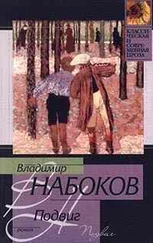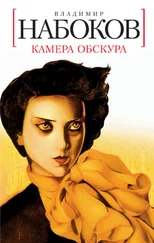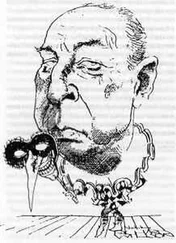Владимир Набоков - Ada, or Ador - A Family Chronicle
Здесь есть возможность читать онлайн «Владимир Набоков - Ada, or Ador - A Family Chronicle» весь текст электронной книги совершенно бесплатно (целиком полную версию без сокращений). В некоторых случаях можно слушать аудио, скачать через торрент в формате fb2 и присутствует краткое содержание. Жанр: Классическая проза, Современные любовные романы, на английском языке. Описание произведения, (предисловие) а так же отзывы посетителей доступны на портале библиотеки ЛибКат.
- Название:Ada, or Ador: A Family Chronicle
- Автор:
- Жанр:
- Год:неизвестен
- ISBN:нет данных
- Рейтинг книги:3 / 5. Голосов: 1
-
Избранное:Добавить в избранное
- Отзывы:
-
Ваша оценка:
- 60
- 1
- 2
- 3
- 4
- 5
Ada, or Ador: A Family Chronicle: краткое содержание, описание и аннотация
Предлагаем к чтению аннотацию, описание, краткое содержание или предисловие (зависит от того, что написал сам автор книги «Ada, or Ador: A Family Chronicle»). Если вы не нашли необходимую информацию о книге — напишите в комментариях, мы постараемся отыскать её.
Ada, or Ador: A Family Chronicle — читать онлайн бесплатно полную книгу (весь текст) целиком
Ниже представлен текст книги, разбитый по страницам. Система сохранения места последней прочитанной страницы, позволяет с удобством читать онлайн бесплатно книгу «Ada, or Ador: A Family Chronicle», без необходимости каждый раз заново искать на чём Вы остановились. Поставьте закладку, и сможете в любой момент перейти на страницу, на которой закончили чтение.
Интервал:
Закладка:
‘And now,’ she said, and stopped, staring at him.
‘Yes?’ he said, ‘and now?’
‘Well, perhaps, I ought not to try to divert you — after you trampled upon those circles of mine; but I’m going to relent and show you the real marvel of Ardis Manor; my larvarium, it’s in the room next to mine’ (which he never saw, never — how odd, come to think of it!).
She carefully closed a communicating door as they entered into what looked like a glorified rabbitry at the end of a marble-flagged hall (a converted bathroom, as it transpired). In spite of the place’s being well aired, with the heraldic stained-glass windows standing wide open (so that one heard the screeching and catcalls of an undernourished and horribly frustrated bird population), the smell of the hutches — damp earth, rich roots, old greenhouse and maybe a hint of goat — was pretty appalling. Before letting him come nearer, Ada fiddled with little latches and grates, and a sense of great emptiness and depression replaced the sweet fire that had been consuming Van since the beginning of their innocent games on that day.
‘Je raffole de tout ce qui rampe (I’m crazy about everything that crawls),’ she said.
‘Personally,’ said Van, ‘I rather like those that roll up in a muff when you touch them — those that go to sleep like old dogs.’
‘Oh, they don’t go to sleep, quelle idée, they swoon, it’s a little syncope,’ explained Ada frowning. ‘And I imagine it may be quite a little shock for the younger ones.’
‘Yes, I can well imagine that, too. But I suppose one gets used to it, by-and-by, I mean.’
But his ill-informed hesitations soon gave way to esthetic empathy. Many decades later Van remembered having much admired the lovely, naked, shiny, gaudily spotted and streaked sharkmoth caterpillars, as poisonous as the mullein flowers clustering around them, and the flat larva of a local catocalid whose gray knobs and lilac plaques mimicked the knots and lichens of the twig to which it clung so closely as to practically lock with it, and, of course, the little Vaporer fellow, its black coat enlivened all along the back with painted tufts, red, blue, yellow, of unequal length, like those of a fancy toothbrush treated with certified colors. And that kind of simile, with those special trimmings, reminds me today of the entomological entries in Ada’s diary — which we must have somewhere, mustn’t we, darling, in that drawer there, no? you don’t think so? Yes! Hurrah! Samples (your round-cheeked script, my love, was a little larger, but otherwise nothing, nothing, nothing has changed):
‘The retractile head and diabolical anal appendages of the garish monster that produces the modest Puss Moth belong to a most uncaterpillarish caterpillar, with front segments shaped like bellows and a face resembling the lens of a folding camera. If you gently stroke its bloated smooth body, the sensation is quite silky and pleasant — until the irritated creature ungratefully squirts at you an acrid fluid from a slit in its throat.’
‘Dr Krolik received from Andalusia and kindly gave me five young larvae of the newly described very local Carmen Tortoiseshell. They are delightful creatures, of a beautiful jade nuance with silvery spikes, and they breed only on a semi-extinct species of high-mountain willow (which dear Crawly also obtained for me).’
(At ten or earlier the child had read — as Van had — Les Malheurs de Swann, as the next sample reveals):
‘I think Marina would stop scolding me for my hobby ("There’s something indecent about a little girl’s keeping such revolting pets…," "Normal young ladies should loathe snakes and worms," et cetera) if I could persuade her to overcome her old-fashioned squeamishness and place simultaneously on palm and pulse (the hand alone would not be roomy enough!) the noble larva of the Cattleya Hawkmoth (mauve shades of Monsieur Proust), a seven-inch-long colossus flesh colored, with turquoise arabesques, rearing its hyacinth head in a stiff "Sphinxian" attitude.’
(Lovely stuff! said Van, but even I did not quite assimilate it, when I was young. So let us not bore the boor who flips through a book and thinks: ‘what a hoaxer, that old V.V.!’)
At the end of his so remote, so near, 1884 summer Van, before leaving Ardis, was to make a visit of adieu to Ada’s larvarium.
The porcelain-white, eye-spotted Cowl (or ‘Shark’) larva, a highly prized gem, had safely achieved its next metamorphosis, but Ada’s unique Lorelei Underwing had died, paralyzed by some ichneumon that had not been deceived by those clever prominences and fungoid smudges. The multicolored toothbrush had comfortably pupated within a shaggy cocoon, promising a Persian Vaporer later in the autumn. The two Puss Moth larvae had assumed a still uglier but at least more vermian and in a sense venerable aspect: their pitchforks now limply trailing behind them, and a purplish flush dulling the cubistry of their extravagant colors, they kept ‘ramping’ rapidly all over the floor of their cage in a surge of prepupational locomotion. Aqua had walked through a wood and into a gulch to do it last year. A freshly emerged Nymphalis carmen was fanning its lemon and amber-brown wings on a sunlit patch of grating, only to be choked with one nip by the nimble fingers of enraptured and heartless Ada; the Odettian Sphinx had turned, bless him, into an elephantoid mummy with a comically encased trunk of the guermantoid type; and Dr Krolik was swiftly running on short legs after a very special orange-tip above timberline, in another hemisphere, Antocharis ada Krolik (1884) — as it was known until changed to A. prittwitzi Stümper (1883) by the inexorable law of taxonomic priority.
‘But, afterwards, when all these beasties have hatched,’ asked Van, ‘what do you do with them?’
‘Oh,’ she said, ‘I take them to Dr Krolik’s assistant who sets them and labels them and pins them in glassed trays in a clean oak cabinet, which will be mine when I marry. I shall then have a big collection, and continue to breed all kinds of leps — my dream is to have a special Institute of Fritillary larvae and violets — all the special violets they breed on. I would have eggs or larvae rushed to me here by plane from allover North America, with their foodplants — Redwood Violets from the West Coast, and a Pale Violet from Montana, and the Prairie Violet, and Egglestone’s Violet from Kentucky, and a rare white violet from a secret marsh near an unnamed lake on an arctic mountain where Krolik’s Lesser Fritillary flies. Of course, when the things emerge, they are quite easy to mate by hand — you hold them — for quite a while, sometimes — like this, in folded-wing profile’ (showing the method, ignoring her poor fingernails), ‘male in your left hand; female in your right, or vice versa, with the tips of their abdomens touching, but they must be quite fresh and soaked in their favorite violet’s reek.’
9
Was she really pretty, at twelve? Did he want — would he ever want to caress her, to really caress her? Her black hair cascaded over one clavicle and the gesture she made of shaking it back and the dimple on her pale cheek were revelations with an element of immediate recognition about them. Her pallor shone, her blackness blazed. The pleated skirts she liked were becomingly short. Even her bare limbs were so free from suntan that one’s gaze, stroking her white shins and forearms, could follow upon them the regular slants of fine dark hairs, the silks of her girlhood. The iridal dark-brown of her serious eyes had the enigmatic opacity of an Oriental hypnotist’s look (in a magazine’s back-page advertisement) and seemed to be placed higher than usual so that between its lower rim and the moist lower lid a cradle crescent of white remained when she stared straight at you. Her long eyelashes seemed blackened, and in fact were. Her features were saved from elfin prettiness by the thickish shape of her parched lips. Her plain Irish nose was Van’s in miniature. Her teeth were fairly white, but not very even.
Читать дальшеИнтервал:
Закладка:
Похожие книги на «Ada, or Ador: A Family Chronicle»
Представляем Вашему вниманию похожие книги на «Ada, or Ador: A Family Chronicle» списком для выбора. Мы отобрали схожую по названию и смыслу литературу в надежде предоставить читателям больше вариантов отыскать новые, интересные, ещё непрочитанные произведения.
Обсуждение, отзывы о книге «Ada, or Ador: A Family Chronicle» и просто собственные мнения читателей. Оставьте ваши комментарии, напишите, что Вы думаете о произведении, его смысле или главных героях. Укажите что конкретно понравилось, а что нет, и почему Вы так считаете.









